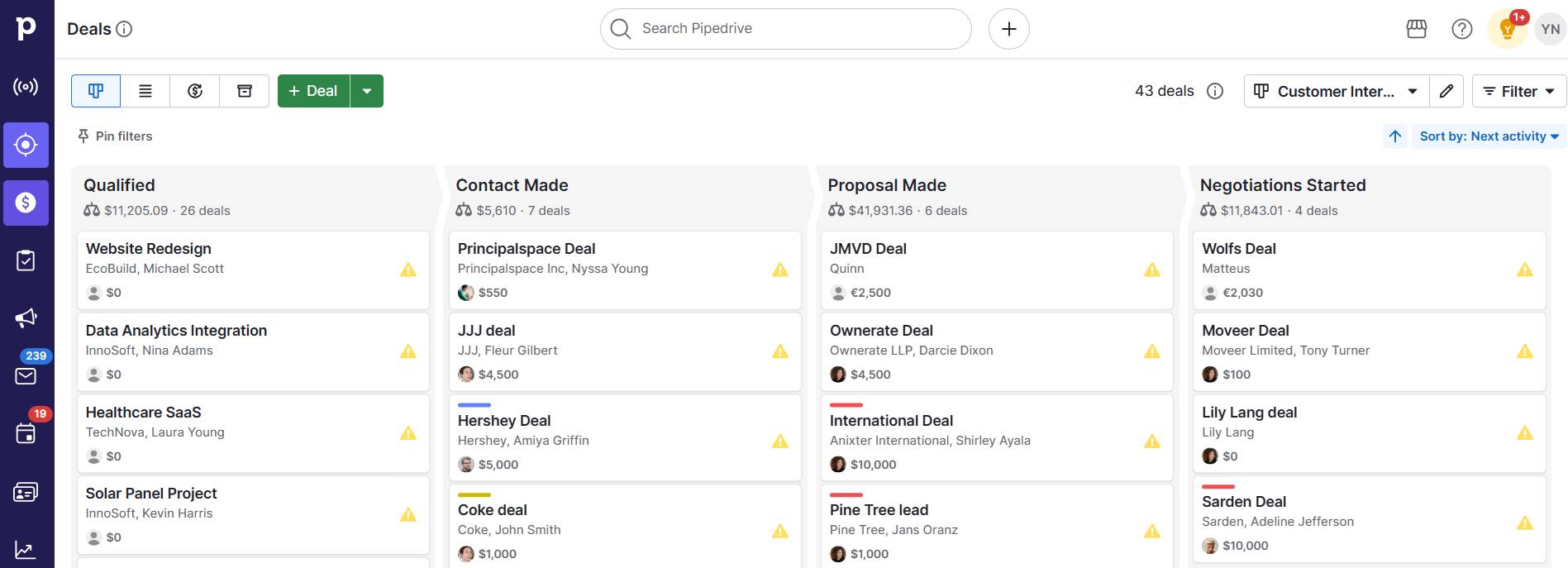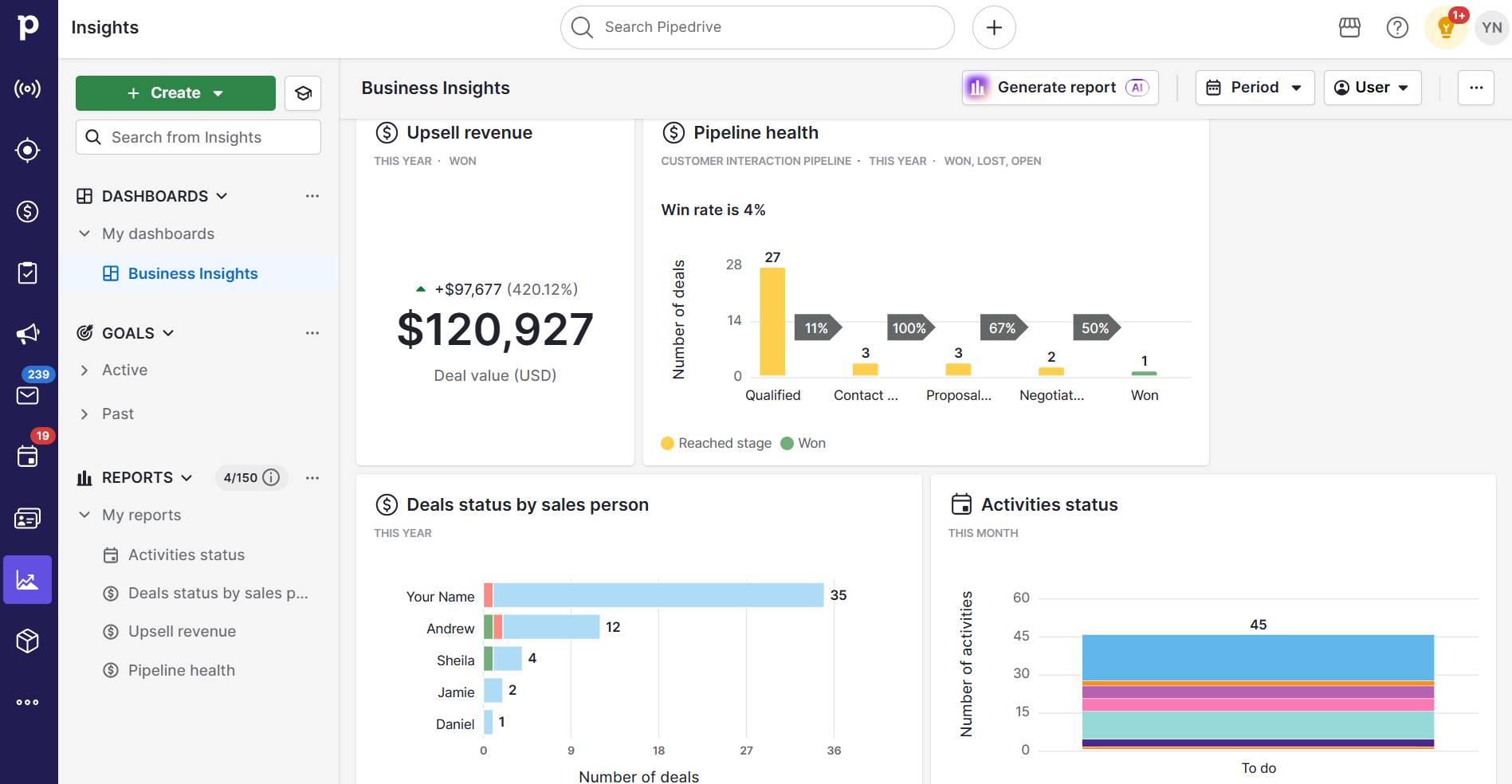Launching and running a business can feel overwhelming.
Entrepreneurs often struggle with choosing the proper legal structure, testing product ideas and figuring out how to scale effectively.
Mastering the fundamentals of business management – like making informed decisions, managing resources wisely and seizing growth opportunities – turns that uncertainty into confidence.
This step-by-step guide outlines eight essential building blocks to running a business. Each step provides practical ways to reduce risk, seize opportunities and strengthen your own business.
Key takeaways for how to run a business
Running a successful business means preparing for setbacks as much as chasing growth, so test ideas and build financial safety nets early.
Customer data is often the easiest way to find new opportunities, from spotting unhappy clients to uncovering untapped demand.
Scaling works best when the timing is right, since moving too fast without market readiness can hurt even strong businesses.
Pipedrive helps SMBs implement these lessons, turn data into smarter choices, automate tasks and support growth – sign up for a free 14-day trial.
8 steps to running a successful business for SMBs
Running a successful business requires testing ideas, building strong foundations and using effective growth strategies.
Some of the top reasons businesses fail are a lack of market need, losing out to competition and using a flawed business model.
Here are eight practical steps to overcome these challenges and build a sustainable business.
1. Test before launch
Testing before launch ensures you don’t waste resources on an idea that won’t sell. This strategy helps your business make smarter decisions and increase the chance of success.
The process involves gathering honest feedback from potential customers to confirm demand. After this, you can refine your product or service to meet customer needs.
Monzo, the UK banking app, tests new app features using A/B testing on a select group of customers.
Here’s an example of a test feature that allows customers to see their mortgage in the Monzo app:

Testing this feature allows Monzo to understand whether:
Customers can find and grasp its purpose
They adopt and continue using it
It’s financially sustainable for the business
As a result, the business can adjust to improve functionality and make informed decisions about whether and when to launch the product feature to all customers.
If you’re starting a business from scratch, the premise is the same: testing provides valuable insight into customer needs, wants and behaviors, guiding you towards success.
Here are some of the ways to test your business idea:
Create a simple prototype. Build a basic version of your product (a minimum viable product or MVP), focusing on the core features. Share it with early users to see if it solves their pain points and test your idea quickly.
Run small pilot programs. Test your product with a limited group of customers to see if they will convert. Use sign-ups, pre-orders or a minor release to measure real demand. Track adoption rates and customer retention to decide if it’s worth scaling.
Gather feedback. Use customer surveys and focus groups to ask potential customers what they think about your product and how they’d use it. Use the insights to refine features and improve your messaging.
Testing early reduces risk, saves resources and helps you launch a product that customers want.
Even if your business is up and running, testing still matters. Customer needs and market conditions change over time, so regularly trialing new features, services or pricing models helps you stay relevant.
Small tests like piloting a new delivery option or surveying customers about updated features can reveal opportunities to improve and align your business with demand.
2. Build a strong business foundation
Building a strong foundation means operating your business clearly, working towards business goals and responding effectively to challenges.
Consider a B2B consultancy firm as an example.
In the early stages of business development, the company defines its mission, vision and core values. It also creates a solid business plan and legal structure.
With these elements in place, the owner can confidently prioritize leads, set realistic sales targets and make decisions about hiring or expanding services without losing focus.
Key strategies include:
Writing a business plan. Provide a clear progression roadmap and reduce the risk of costly missteps with a business plan. Break your objectives into achievable milestones, then review progress and adjust strategies as needed.
Defining your mission, vision and core values. State your purpose and principles for consistent decision-making and team alignment. Align day-to-day operations with your mission and values to maintain focus. Revisit and refine them as your business evolves.
Choosing the proper legal structure. Select the right legal framework (like LLC, sole proprietorship, partnership or corporation) to protect your personal assets and support business growth. Consult a law firm or financial advisor to find the best type of business structure for your goals.
New businesses need to build these foundational elements from the ground up. Putting them in place early helps support growth and sets the stage for long-term success.
Start by ensuring your company has the proper business licenses and permits from local or state authorities to avoid fines or legal issues. Requirements differ by industry, so always check the regulations before starting operations.
Pick a business name that reflects your brand, check availability and register it. Make sure it’s easy to remember, unique and legally compliant.
If you’re already running a business, audit your foundation and update it where needed. For instance, you may outgrow a sole proprietorship and form an LLC as the business scales.
This update not only protects your personal assets but also makes it easier to bring in partners or investors.
Download Pipedrive's lean business plan template
3. Find a support network
A strong support network helps you navigate challenges and access expertise from other small business owners. It provides guidance when making critical decisions and encouragement during challenging moments.
Look at ReBlood RX as an example. The company (which repurposes expired human blood into an oxygen-delivery product for patients) contacted the Economic Development Collaborative (EDC) to expand its network and secure funding.
The EDC connected ReBlood RX with organizations that could use its technology and directed them to resources for medical startups.
The company then secured a $100,000 grant from the California Office of the Small Business Advocate and a $100,000 investment from RPV Global, which fueled product development and grew the business.
Other government agencies, like the Small Business Administration (SBA), support small businesses with entrepreneurship activities, such as securing loans, funding and mentoring.
Take a look at some of the other ways to build a support network:
Connect with experienced mentors. Seek guidance from successful entrepreneurs to avoid common pitfalls and gain practical insights. Use local business directories or social media to find experienced business owners and discuss challenges and opportunities.
Join local business associations. Participate in business associations to expand your network and learn from others facing similar challenges. Attend events, webinars and discussions to gather tips and resources.
Surround yourself with inspirational people. Engage with colleagues, advisors or peers who push you to improve and innovate. Ask for honest feedback to refine your strategies and use their perspectives to approach opportunities from a fresh angle.
Engaging a strong support network provides guidance, motivation and valuable connections that help your business overcome challenges and seize growth opportunities.
4. Know your market
Understanding your market helps you make smarter decisions about product design, marketing strategies and service delivery.
Use these insights to align with market trends and attract more customers.
Say that a B2B sales company interviews potential clients and researches competitors before launching its services.
The interviews and research show that:
Customers expect faster implementation times, transparent pricing and tailored support
Competitors deliver rigid service packages with hidden fees and lengthy onboarding processes
By identifying these trends, the B2B company can provide solutions that directly address customer frustrations and stand out in the market – for example, offering modular service packages with transparent pricing and a streamlined onboarding process.
This approach meets customer expectations, builds trust and differentiates the firm from competitors.
Here are some tips for understanding your market:
Conduct customer surveys. Use surveys to ask consumers about their needs and preferences to uncover pain points and opportunities.
Perform market research and competitive analysis. Review competitor websites, social media channels and customer reviews to examine what they offer and how they position themselves. Benchmark their strengths and weaknesses to spot areas where you can differentiate.
Create customer personas. Develop profiles for your ideal customer base to clarify who you’re targeting, including their demographics, behaviors and motivations. Use these personas to tailor your sales and marketing strategies effectively.
A CRM is a valuable tool for collecting and analyzing customer data.
With Pipedrive, for example, users can track interactions across the sales cycle, segment leads by behavior and identify patterns that reveal what drives conversions.
Here’s an example of how to track customer interactions in Pipedrive:

These insights help businesses refine their messaging, prioritize high-value opportunities and build stronger customer relationships.
Survey platforms (like Jotform and NativeForms) also integrate with Pipedrive, meaning you can send surveys and record responses directly in the CRM.
Centralizing feedback helps you spot trends faster and make quick decisions to improve the customer experience.
Pipedrive in action: Interesting Content uses Pipedrive’s intuitive interface and customer insights to identify what consumers need, track why deals are won or lost and refine its sales process. Since adopting Pipedrive, Interesting Content has quadrupled its revenue.
5. Develop a marketing strategy
A clear marketing plan helps you effectively promote your business, build awareness, drive engagement and generate measurable results.
Canva is a good example of developing and executing a solid marketing strategy. The platform positions itself as an easy-to-use design tool and markets itself accordingly with a user-focused approach.
Look at the company’s social media content as an example:

The posts are visually appealing and educational, sharing quick design tips, templates and creative ideas that help users get started and see immediate results.
The platform also posts user-generated content with partners and influencers to build trust and reach a wider audience.
Here’s a video post from a Canva partner:

Canva’s user-focused content marketing strategy aligns with its overall ethos. The messaging shows the platform’s simplicity and creativity, delivering its brand promise and engaging users.
Read through these tips for building an effective marketing strategy:
Define clear marketing objectives. Set specific goals such as increasing leads, growing website traffic or boosting conversions. Break each goal into measurable milestones and track progress to ensure your strategy stays on course.
Create a strong brand identity. Design a brand that reflects your values and resonates with your target audience. Use consistent visuals, tone and messaging across all touchpoints to build recognition and trust.
Leverage social proof and partnerships. Share user-generated content and testimonials or collaborate with influencers to build credibility. Highlight success stories to attract new users and reinforce customer loyalty.
A well-defined marketing strategy connects your business with the right audience and highlights your value – both necessary for business growth.
Download Your Sales and Marketing Strategy Guide
6. Build a reliable team
Employees aligned with company values help the business run smoothly, ensuring every action supports long-term growth.
Say that a small investment firm hires employees who value transparency. These employees provide consistent guidance, respond quickly to client questions and maintain trust across all interactions.
This behavior boosts client retention and strengthens the company’s reputation within the financial services industry.
Follow these steps to build a strong and reliable team:
Hire employees who share your business values. Recruit people whose mindset and work ethic align with your company’s mission. Conduct structured interviews and reference checks to ensure candidates fit the culture and can contribute to your goals.
Offer training and development opportunities. Provide learning programs and resources to help employees build skills and stay current with industry trends. Encourage continuous development to improve performance and retain top talent.
Foster open communication and feedback. Create regular channels for team members to share new ideas, concerns and suggestions. Hold meetings, one-on-ones and feedback sessions to identify challenges early and improve collaboration.
Investing in a reliable team lays the foundation for consistent performance, satisfied clients and business success.
For existing businesses, building a reliable team is just as much about evolving as it is about hiring.
Regularly review whether your current team structure supports your growth goals,and don’t be afraid to reskill or upskill employees to meet new demands.
When hiring, focus on filling skill gaps and consider how each new hire strengthens your culture and capabilities.
7. Plan for growth
Running a business with growth in mind helps you plan effectively for the future.
It helps you anticipate challenges, optimize resource allocation and build a foundation that supports long-term success.
Say that a SaaS company offering project management software prepares for higher demand by scaling servers, hiring extra support staff and creating onboarding resources.
As a result, the business boosts customer satisfaction, retains clients, strengthens its reputation in the market and keeps profits healthy as it expands.
Growth takes time and hard work. The income for the first year varies widely depending on effort, startup costs and demand – some new businesses break even quickly, others reinvest before seeing profit.
Here’s how to prepare your business for growth:
Implement forecasting systems. Leverage tools like CRM systems, analytics platforms and sales dashboards to track performance data and forecast growth. Use this data to anticipate challenges, plan resource allocation and improve business development.
Set quarterly and yearly growth targets. Define objectives for revenue, client acquisition and market expansion. Use these targets to plan and prepare for growth, such as budgeting for new tools or scheduling product launches to meet demand.
Align staffing with long-term business needs. Forecast how rising demand will affect team capacity. Prepare to hire new employees, provide training for existing staff or expand office space to ensure your team can handle growth.
Preparing for growth helps your business scale smoothly, meet customer expectations and maintain profitability while navigating new opportunities.
8. Use technology to optimize performance
Technology helps SMBs centralize and streamline business operations by managing workflows, optimizing processes and tracking performance in real-time.
Take a look at Lowlander Beer as an example. The business struggled without a central source of truth, making it hard to track performance, manage sales reps and follow up with leads.
Using Pipedrive’s sales CRM, they’ve centralized sales activity. The Insights dashboard provides clear weekly and quarterly reports, while automations ensure every lead gets attention.
Here’s an example of how the Insights dashboard appears in Pipedrive:

Lowlander also uses custom workflows to capture website inquiries as deals, categorize accounts by potential and direct reps’ focus to the most valuable opportunities.
Since working with Pipedrive, the company has achieved a:
75% deal closure time reduced from 32 hours to eight
35% increase in conversion rate of leads to customers
45% reduction in customer onboarding time
The best software for running a small business depends on your business needs. However, most small businesses benefit from using a CRM to centralize sales, lead generation and marketing activity.
A CRM can help new businesses build efficient systems, while established businesses can use CRM data to identify what’s already working and scale those successes.
Here’s how to use technology to drive business success:
Centralize customer and sales data. Use a CRM to store client interactions, pipeline details and performance metrics in one place. It will break down data silos and help sales reps focus on the highest-potential opportunities.
Integrate systems. Connect systems to streamline workflows and reduce manual data entry. Ensure that marketing campaigns, customer communications and financial reporting feed into a single source of truth for more thoughtful decision-making.
Automate repetitive tasks. Set up automations for lead follow-ups, reporting and contract generation to spend less time on admin and more time closing deals. For example, schedule automatic reminders to follow up with leads and create drip email campaigns to nurture leads.
Use AI-powered recommendations. Apply AI technology to analyze sales data and highlight the most effective actions. For example, Pipedrive’s AI-powered Sales Assistant suggests the best next steps, such as which leads to prioritize or how to shorten the sales cycle.
Centralizing data, automating tasks and using AI insights help SMBs streamline operations and focus on closing more deals.
Final thoughts
Whether launching a new company or improving an existing one, these eight steps can guide you toward building a successful business.
The process may feel complex, but the right tools simplify each stage. With technology, you can work smarter and scale faster – from testing ideas to managing growth.
Pipedrive’s CRM helps you put these principles into action. Centralize customer data, track leads and automate key tasks so you can focus on high-value opportunities.
Sign up for a free 14-day trial to prioritize high-value opportunities and streamline your sales process.





